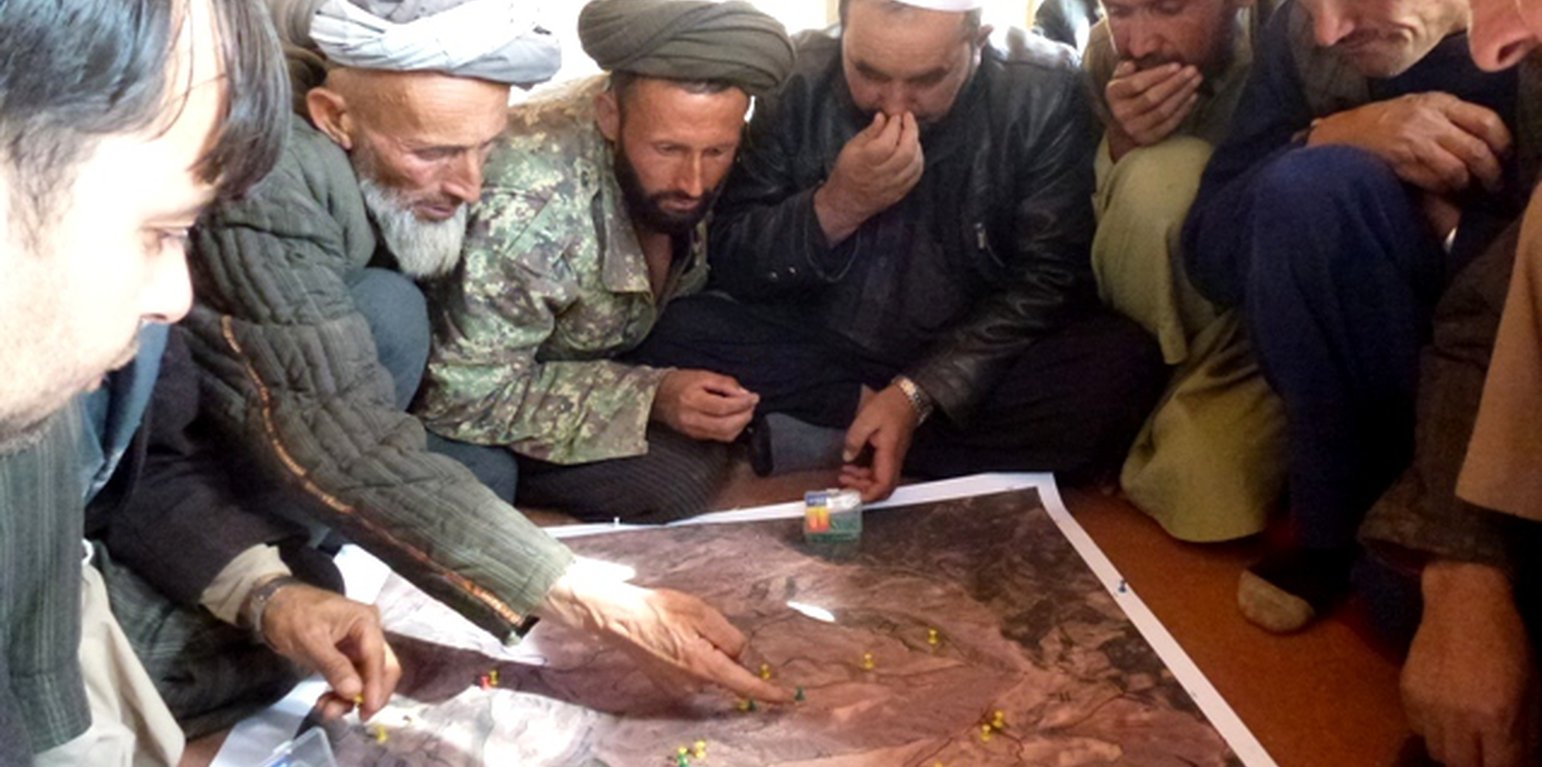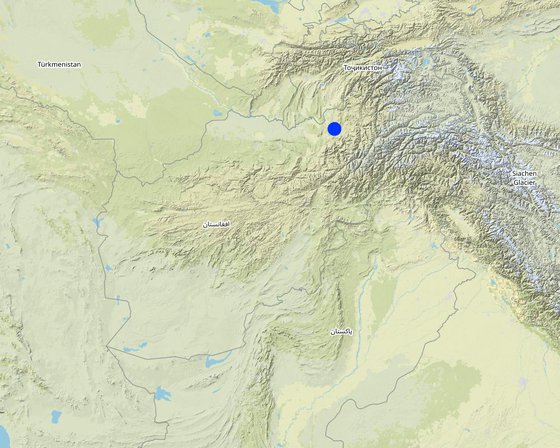



Terre des Hommes (Tdh) has been implementing the Livelihood project (LIPT) in Rustaq district in northern Afghanistan since 2007. The overall aim of the project is to offer the rural population new and improved livelihood options, with capacity building of the rural population, to design and implement their own sustainable development options, and to enhance their resilience to cope with natural and conflict-related stress. For this purpose, capacity of supporting stakeholder institutions is strengthened (LIPT’s boundary partners) to ensure that good development is on-going. Boundary partners are trained and equipped in relevant techniques regarding sustainable natural resource management.
Two Watershed Associations (WSA) and 20 Natural Resources Management Committees (NRMC) were founded through LIPT. Two WSAs, in Chaker and Nahristan watershed areas, are registered at national level within the Ministry of Agriculture Irrigation and Livestock (MAIL), and at the regional level with the Department of Agriculture. Both associations are strong, active, dynamic, and have the capacity to coordinate and support the NRMCs at village level. Out of their newly established and registered regional offices, the WSAs coordinate the NRMCs, take over responsibilities from Tdh (e.g. the 2014 reforestation campaign) and are getting more involved in planning and monitoring of LIPT’s activities. The 20 NRMCs have "hands and eyes" on all LIPT activities implemented in their communities, and their trained extension workers render valuable services to the farmers in their villages.
Methods: Today, all NRMCs have a strong institutional set-up. Their extension workers have been trained and equipped. Members of NRMCs and WSAs have been trained on group management, planning, documentations, record keeping, IPM, reforestation management, soil protection, mulching, hedgerows and terracing, making fermenters, pruning and budding. WSAs and NRMCs gained further organizational, technical and management capacity building in both watershed areas. As one of biggest challenge at watershed level is soil erosion within hillside agriculture, LIPT III trained the NRMCs and WSAs on terracing and hedgerows to protect the soil from erosion. Furthermore, NRMCs were trained in sustainable irrigation water management, gully treatment, and surface water harvesting. There were also training courses conducted on leadership, finance, proposal writing, documentation, procurement and operations management.
Both WSAs and NRMCs started to get a real understanding of environmental issues and were then able to motivate their communities. WSAs coordinated the NRM intervention with NRMCs including reforestation, soil protection hedgerows, contour lines, terracing, establishment of public nurseries (to produce trees and be an income source for WSAs), establishment of centralized community bakeries (to reduce the demand for firewood and decrease the women’s workload in the watershed areas), irrigation infrastructure, bio-engineering and gully control (to reduce the progression of gullies on both ploughed lands and pastures), livestock value chains at regional (watershed) level, etc., while NRMCs are looking after these interventions and the mobilization of the community at the village level. Farmers and communities have adopted natural resource management practices to maintain/increase soil fertility, rangeland, water resources and forest coverage.

Lugar: Dashti Mirzai, Javaz Khana and Sari Joy villages, Tahor Province, Rustaq districts, Afganistán
Dato de inicio: 2007
Año de conclusión: n.d.
Tipo de Enfoque| ¿Qué partes interesadas/ entidades implementadoras estuvieron involucradas en el Enfoque? | Especifique las partes interesadas | Describa los roles de las partes interesadas |
| usuarios locales de tierras/ comunidades locales | The overall aim of the project is to offer the rural population new and improved livelihood options and give capacity building to the rural population to design and implement their own sustainable development options, and enhance their resilience to cope with natural and conflict related stress. | |
| organizaciones comunitarias | Watershed Associations (WSA) and Natural Resources Management Committees (NRMC) | |
| organización internacional | Terre des Hommes , SDC |
Las decisiones fueron tomadas por
La toma de decisiones se basa en
On-going research, as well as multiple trials by LIPT to find the best-adapted technical solutions, to communicate and discuss them with local communities and farmers, were the key elements of this success.
local institution were support with equipment
NRM is the area where LIPT III made the most remarkable progress despite the fact that NRM was a completely new approach, and its implementation is highly demanding in terms of manpower, community awareness and mobilization. Profound changes in behaviour, motivation and mobilization both at individual and community levels made this possible. On-going research, as well as multiple trials by LIPT to find the best-adapted technical solutions, and to communicate and discuss them with local communities and farmers, were the key elements of this success. The NRMCs, WSAs as well as individual farmers in both watershed areas increased their knowledge and gained a better understanding of the importance of sustainable management, rehabilitation of farm land, pastures and their main natural resources. Farmers adapt and replicate the innovations once they see the results, farmers interest became high and they are ready to replicate it to protect their land form degradation.
Farmers adapt and replicate the innovations. Once they see the results, farmers' interest became high and they are ready to replicate it to protect their land from degradation.
One Example: Under irrigation water improvement interventions, LIPT in coordination with NRMCs brought more 110 ha land under irrigation and the yield is expected to be doubled in this agricultural land, and NRMCs are trained on sustainable irrigation water management, gully treatment, and surface water harvesting
To look to the capacity and institutional strengthening of the project boundary partners, LIPT III will leave behind a successful and strong boundary partner in place to carry out the development options, as main boundary partners will have source of income (nurseries, cooperative shop, etc.) for their operation and management.